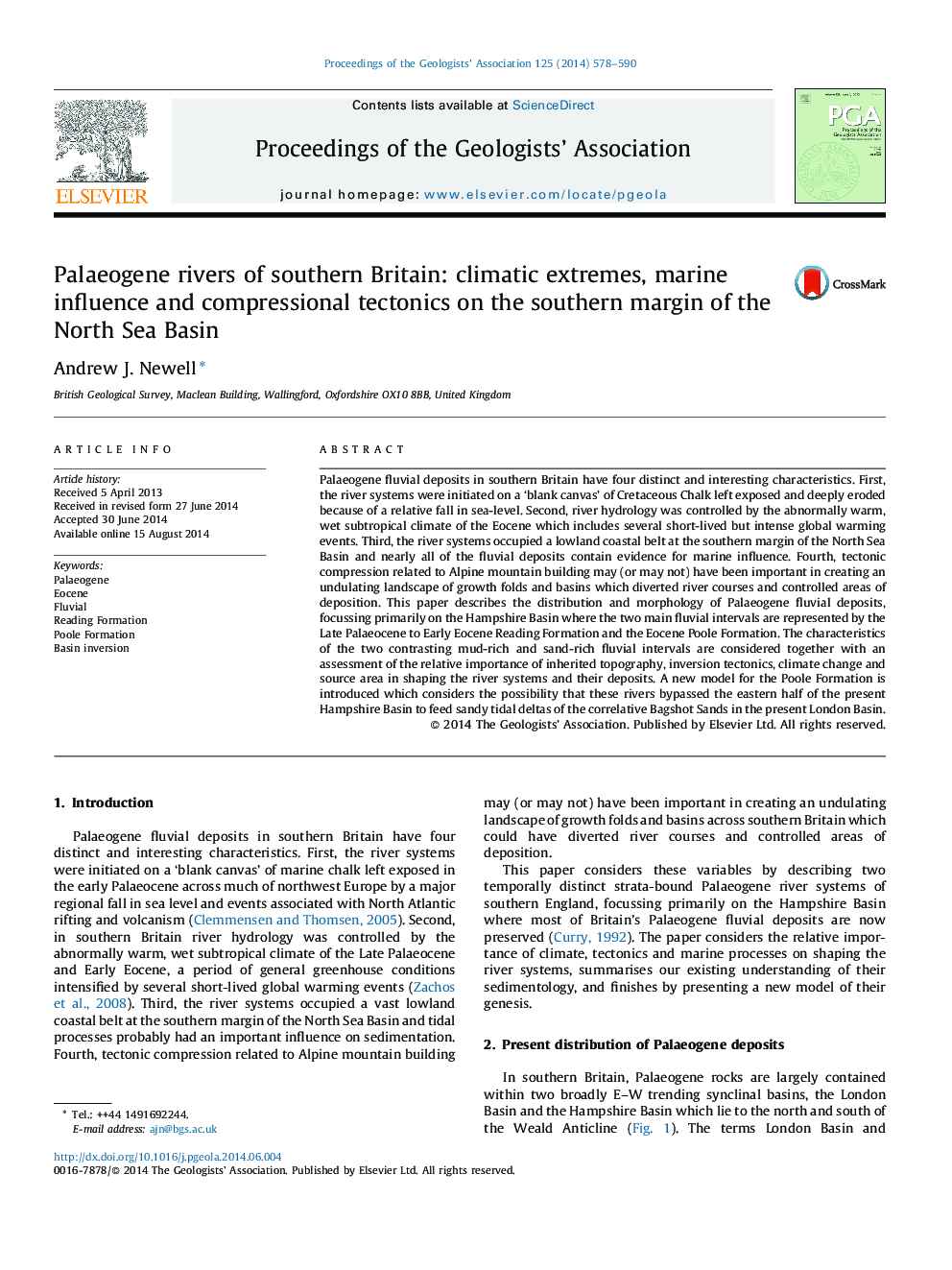| Article ID | Journal | Published Year | Pages | File Type |
|---|---|---|---|---|
| 4735002 | Proceedings of the Geologists' Association | 2014 | 13 Pages |
Abstract
Palaeogene fluvial deposits in southern Britain have four distinct and interesting characteristics. First, the river systems were initiated on a 'blank canvas' of Cretaceous Chalk left exposed and deeply eroded because of a relative fall in sea-level. Second, river hydrology was controlled by the abnormally warm, wet subtropical climate of the Eocene which includes several short-lived but intense global warming events. Third, the river systems occupied a lowland coastal belt at the southern margin of the North Sea Basin and nearly all of the fluvial deposits contain evidence for marine influence. Fourth, tectonic compression related to Alpine mountain building may (or may not) have been important in creating an undulating landscape of growth folds and basins which diverted river courses and controlled areas of deposition. This paper describes the distribution and morphology of Palaeogene fluvial deposits, focussing primarily on the Hampshire Basin where the two main fluvial intervals are represented by the Late Palaeocene to Early Eocene Reading Formation and the Eocene Poole Formation. The characteristics of the two contrasting mud-rich and sand-rich fluvial intervals are considered together with an assessment of the relative importance of inherited topography, inversion tectonics, climate change and source area in shaping the river systems and their deposits. A new model for the Poole Formation is introduced which considers the possibility that these rivers bypassed the eastern half of the present Hampshire Basin to feed sandy tidal deltas of the correlative Bagshot Sands in the present London Basin.
Related Topics
Physical Sciences and Engineering
Earth and Planetary Sciences
Geology
Authors
Andrew J. Newell,
